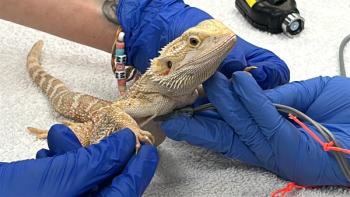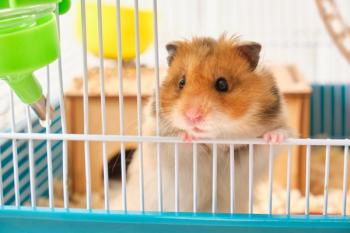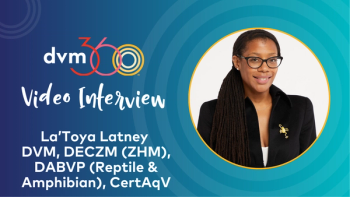
Understanding and managing behavior problems in birds (Proceedings)
Relaxed: fluffed feathers under the beak and on the head, preen, stretch, eye closing slightly, pupils normal size, head low around shoulders, vocalizing quietly, gently playing with a toy or object, one foot tucked up close to the body, rouse, flick its wings or shakes tail, scratches its own head
Body Language of Birds
Relaxed: fluffed feathers under the beak and on the head, preen, stretch, eye closing slightly, pupils normal size, head low around shoulders, vocalizing quietly, gently playing with a toy or object, one foot tucked up close to the body, rouse, flick its wings or shakes tail, scratches its own head
Curiosity: Explore with their beaks – usually while holding in its foot, gentle to firm biting, feathers slightly fluffed around the head, crest up in some species, head tilted as if listening intently
Fear: quiet, feathers on head and body slicked back, mouth open slightly, stand tall with head pulled back, eyes may be darting to look for escape route, crouch down and spring up as if to take flight, lean back away from what it fears
Aggression
• Fear aggression – fight back due to fear and no place to escape
• Personal aggression – consistently directed at one person, especially when bonded to another
• Territorial aggression – to protect territory
Evidence of Aggression includes: feathers puffed up around head and shoulders, wings held out away from the body, tail fanned, aggressive biting at the perch, eye pinning, mouth open, white facial skin may become flushed, feathers may become slicked back on the head as the bird runs or lunges at the target
Excitement: eye pinning (,alternately constricting and dilating the pupil) tail fanning, screaming, Cockatoos will lift up their crest and stand tall, some birds crouch down and flap wings in short rapid movements against the body – excitement may lead to aggression
Overheated bird: open mouth, feathers slicked to body, wings may be held away from the body, head hanging, eyes closed, breathing hard
Tired bird: blinks eyes slowly and often, head shakes, feathers fluffed, small flicking motion of wings, eyelids heavy, may tuck head over shoulder
Sick bird: fluffed, unsteady, sleeps a lot even times when normally active, tail bob or increased respiratory effort, eyes partially closed, huddled at bottom of cage, not interested in toys, eating or defecating less or not at all
Bored bird
• Lack of interest in usual toys, normal appetite but lethargic, excessive screaming
• Normal physical exam by vet bloodwork/xrays
Sick bird: Loss of appetite, excessive sleeping, ruffled feathers/shivering, stumbles, clumsy
Behavioral problems
-Normal behaviors taken to excess: Screaming, Biting, Grooming
-We provide too much for pet birds: love, warmth, shelter, abundance of food and light, cuddling while taking away their natural jobs of foraging, protecting territory, nesting and reproduction
"Getting to the end result is not as important as having the process be as positive as possible"
Barbara Heidenreich in Good Bird – a Guide to Solving Behavioral Problems in Companion Pets (Avian Publications)
Stereotypic Behaviors of Birds
• Repetitive pecking at same spot
• Continuous somersaulting on the perch
• Continuous head bobbing
• Repetitive route tracing/pacing
• Grooming to excess
Extinguishing Negative Behaviors
• Examine behaviors to see why they may have started
• Examine behaviors from the bird's point of view
• It may be a problem to you but to the bird it serves a function or else it would not continue to do it
• Gain something of value (attention, items)
• Remove something aversive
o Don't reinforce bad behavior
o Don't attempt to train if bird is tired, sick, over excited, stressed
o Consistency is imperative
o Respect the body language of the bird
o Respect the likes and dislikes of the bird
o Do not force training as a stressed bird will associate the training as something negative
o Never punish – instead reward good behavior
o Punishment focuses on WHAT NOT TO DO, it eliminates positive reinforcement - no reason for them to want to comply
o Positive reinforcement of alternative behaviors teach the bird WHAT TO DO
o Time Out
o Turn away, set down, put in a special cage or on a special perch
o Short interval – 30 sec. to several minutes
o Immediately give bird opportunity for appropriate behavior
o No other consequences – emotional displays reinforce problem behavior
o Remember that it is best to replace with an alternative behavior that is desired
For example – talking instead of screaming or waiting on the perch instead of lunging at the door
Managing Bad Behavior Situations
1) You offer your hand to your bird and he hangs on the cage door
BAD: Grabbing the bird off the door
GOOD: Slowly gain trust by offering treats and positive reinforcement. Walk away a few minutes to let bird know that you will not offer hand if he does not respond then offer treats
2) Bird bites hand while you are typing on the computer to get your attention
BAD: Scratch bird on the head because you think this is funny or sweet
GOOD: Put bird in time out, ignore bird
BETTER: Reward good behavior as soon as it is seen
3) You enter your home after being gone all day and your bird screams shrilly for your attention
BAD: Greet the bird enthusiastically
GOOD: Remain silently out of sight until the bird quiets then approach the bird quietly
BETTER: If your bird makes a good sound (silence or an acceptable sound such as a whistle) reward this behavior immediately
4) Your bird screams anytime he sees an object he is afraid of
BAD: remove the object from sight
GOOD: desensitize the bird to the object and slowly associate good things with the object
5) Your bird is bonded to you and when he hops down off the cage he charges at anyone else to bite them
BAD: You "rescue" the other family member by scooping up the bird and petting him
GOOD: Allow the other person to develop a more positive relationship with the bird in neutral territory without you or his cage (territory) present
BETTER: Head scratches, treats, toys so the new person is associated with the "good" things the bird likes
6) Your bird bites you when you are bringing her back to her cage
BAD: Yelling at or hitting the bird
GOOD: Put the bird down to allow time for you both to cool off, then tempt the bird back into the cage with positive reinforcement
7) You adopt an older bird that has been cage bound and is afraid to leave the cage
BAD: Force her to come out of the cage
GOOD: Tempt her slowly over time towards the door and out with treats and a calm assuring voice
BETTER: Put her right back into the cage once she is through the door to allow her to get used to the changes slowly. Gradually take her to farther and farther distances as she gets more comfortable.
8) Your bird has received a clean bill of health but is a behavioral feather picker
BAD: You yell at him or spray him with water whenever you see him picking
GOOD: Divert his attention and then cue him for a more positive behavior and then offer a reward
BETER: Provide behavioral enrichment, give him jobs, provide best diet, regular baths
Excessive Egg Laying
• Too much light, too much food/treats
• Too much cuddling
• Too much exposure to "mate"
• Access to nest
o Decrease Egg Laying
o Decrease light/food/treats
o Remove access to nest/"mate"
o Decrease or eliminate cuddling
Self-Mutilation
• Medical: bacterial/fungal skin infection, nervous dysfunction, parasites, malnutrition (high fat diets), systemic diseases, endocrine disorders, exposure to toxins, chemicals or smoke, allergies, hormonal influences
• Boredom, dissociative disorder, social deprivation, separation anxiety, stress, sleep deprivation, abnormal photoperiods
o Often initial cause is gone but behavior continues
o Normal behavior taken to excess
Avian Behavioral Enrichment
How does behavioral enrichment help pet birds?
"Providing the environmental stimuli necessary for optimal psychological and physiological well being"
• Decreases boredom
• Helps keep psychologically stimulated
• Less stereotypic behavior
• Less negative behaviors
• Better quality of life
o Make changes gradually
o New toy
o New cage location
o Bird feeder outside the window
o Fish tank near the cage
o Music – "dance" with the bird
o Spring loaded curtain rod in shower
o Non-toxic branches in Christmas tree holder
o Play gym outside of cage
o Knotted leather or cotton ropes
o Foraging toys
o Dixie cup with nut inside twisted closed
o Pill vial with rock or treat inside (supervised)
o Fruit and vegetables on a skewer
o Gatorade or soda bottle with nuts inside
o Old phone book stuck through the cage bars
o Peek-a-boo, fetch, Hide and seek
o Train to do tricks
o Untreated woods
o Bath time – easy behavioral enrichment
o Easy shower perch for enrichment
o Veggies and fruit on skewers
Newsletter
From exam room tips to practice management insights, get trusted veterinary news delivered straight to your inbox—subscribe to dvm360.






